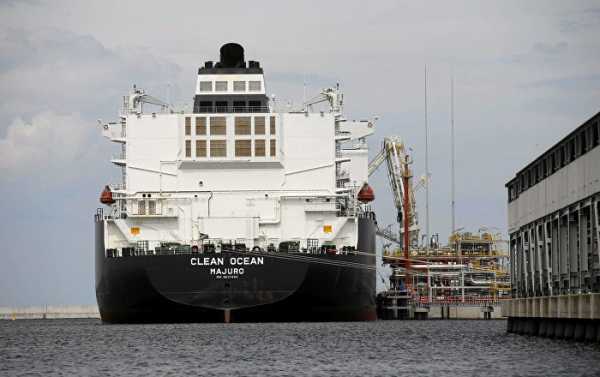
The Trump administration has shot itself in the foot by tightening the screws in the US-China tariff war: Beijing is turning its back on American liquefied natural gas (LNG) in response to Washington’s third round of tariffs. The move is especially painful for the US, as it had projected to jump on the bandwagon of the booming Asian gas market.
It appears that China has found the US’ sore spot: Beijing has dramatically diminished the acquisition of American liquefied natural gas (LNG) while US crude oil shipments to the country have completely stopped in recent weeks, according to China Merchants Energy Shipping Co (CMES).
The main reason behind China’s change of heart is Donald Trump’s trade war on the country.
Starting from September 24, US President Donald Trump imposed tariffs on $200 billion more in Chinese goods, marking the third round of the Sino-American tariff spat. Beijing’s response wasn’t long in coming: China retaliated with levies on $60 billion in American goods, including a 10-percent tariff on the US LNG.
Meanwhile, US LNG exports to China have started declining amid the trade spat: “Prior to the slowdown, China was on track to import 141.6 billion cubic feet (bcf) of US LNG in 2018, up from 103.4 bcf in 2017 and 17.2 bcf in 2016,” Reuters highlighted.
According to Thomson Reuters vessel tracking and US Department of Energy data, China is now on track to buy “less than 100 bcf of US LNG in 2018.” Thus far, US LNG supplies in 2018 have accounted for just 5 percent of total Chinese LNG imports. For comparison’s sake, in 2017 China acquired about 15 percent of all US LNG shipped in 2017.
China’s blow is especially painful for the Trump administration, as it is increasingly promoting US LNG worldwide. In March 2018, Secretary of Commerce Wilbur Ross called upon Beijing to buy more American super-chilled fuel to cut the trade deficit gap with the US.
“China needs to import very, very large amounts of LNG and from their point it would be very logical to import more of it from us, if for no reason other than to diversify their sources of supply,” Ross told Bloomberg TV on March 22.
The Trump administration has long sought to beef up the US presence in the growing Chinese energy market. According to the International Energy Agency (IEA), Chinese gas demand is set to grow by 60 percent between 2017-2023 reaching 376 billion cubic meters (bcm). Having focused on cutting CO2 emissions, China has already outpaced Japan as the largest natural gas importer in the world.
Seeking to jump on the bandwagon of Asia’s booming gas market, the US has boosted its LNG industry. The US Energy Information Administration (EIA) forecasted in December 2017 that the US’ five additional LNG projects were expected to increase total US liquefaction capacity to 9.6 billion cubic feet a day (bcf/d) by the end of 2019, from 2.8 billion bcf/d in August 2017.
In July 2018, Forbes foresaw that China would need more US LNG even though Beijing was inclined to increase imports of Russian gas through the Power of Siberia pipeline: “Yes, Russia will be a key supplier, but pipeline supplies from Gazprom simply won’t be enough to dim the bright future for US LNG in China,” wrote Jude Clemente, a Forbes energy contributor.
However, the ongoing escalation of the US-China trade war is likely to bring the bold American plan to naught. Washington is seemingly on track to lose one of the most promising energy niches. Besides, the latest developments cast a shadow on the construction of a Magnolia LNG gas liquefaction plant in Louisiana with a capacity of 8 million tons per year.
At the same time, the US-China trade spat provides new opportunities to Russia and Gulf countries. Currently, China is substituting US LNG with the super-chilled fuel from Qatar, Saudi Arabia and the United Arab Emirates (UAE).
For its part, Gazprom’s Power of Siberia, which is expected to become operational on December 20, 2019, is designed to deliver 38 billion cubic meters of Russian gas to China annually. And that is not all: According to Gazprom estimates, China’s pipeline gas demand may soar up to 110 bcm by 2035. So, probably, the Russian gas giant will need to lay another pipe to the country.
Sourse: sputniknews.com






